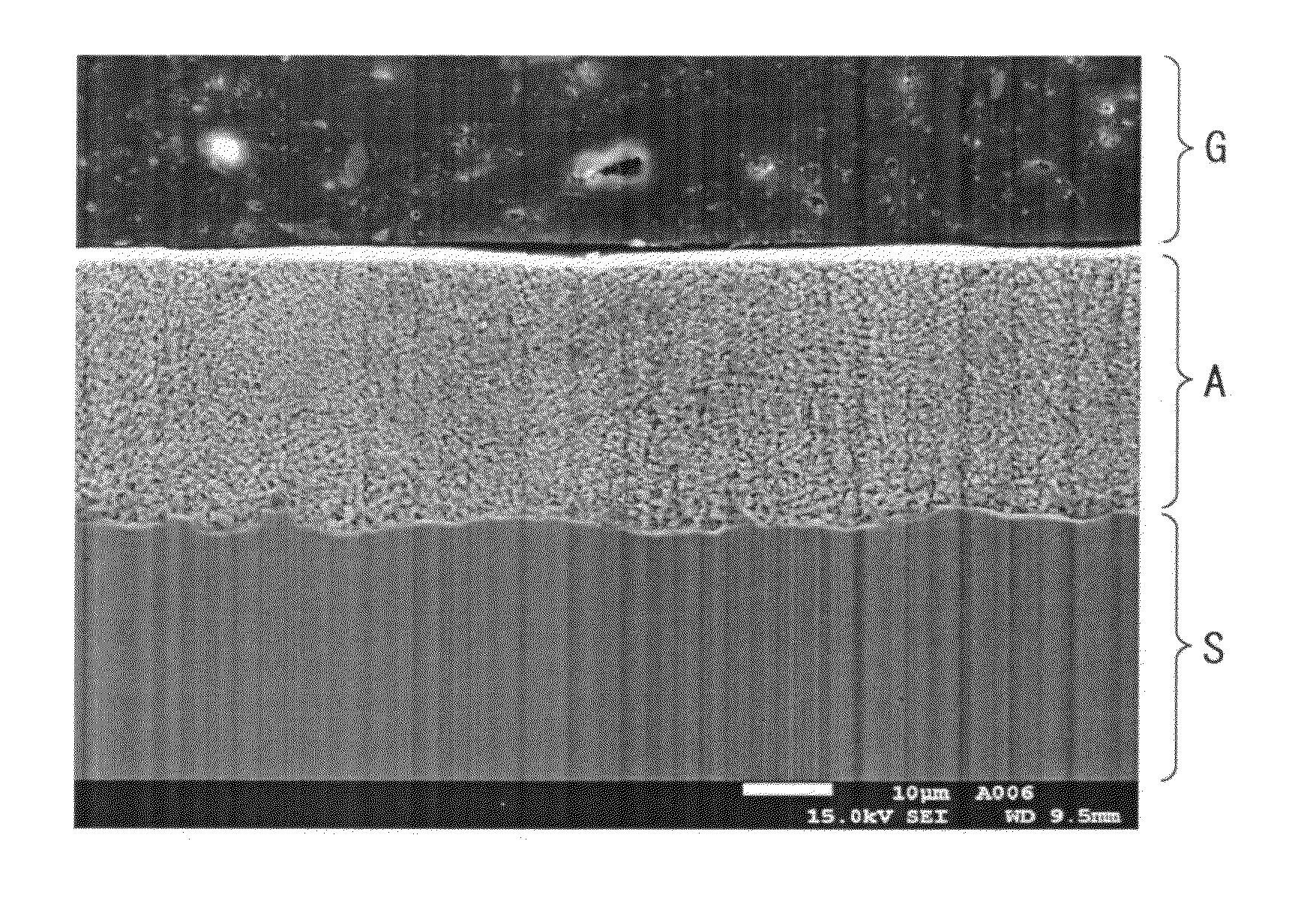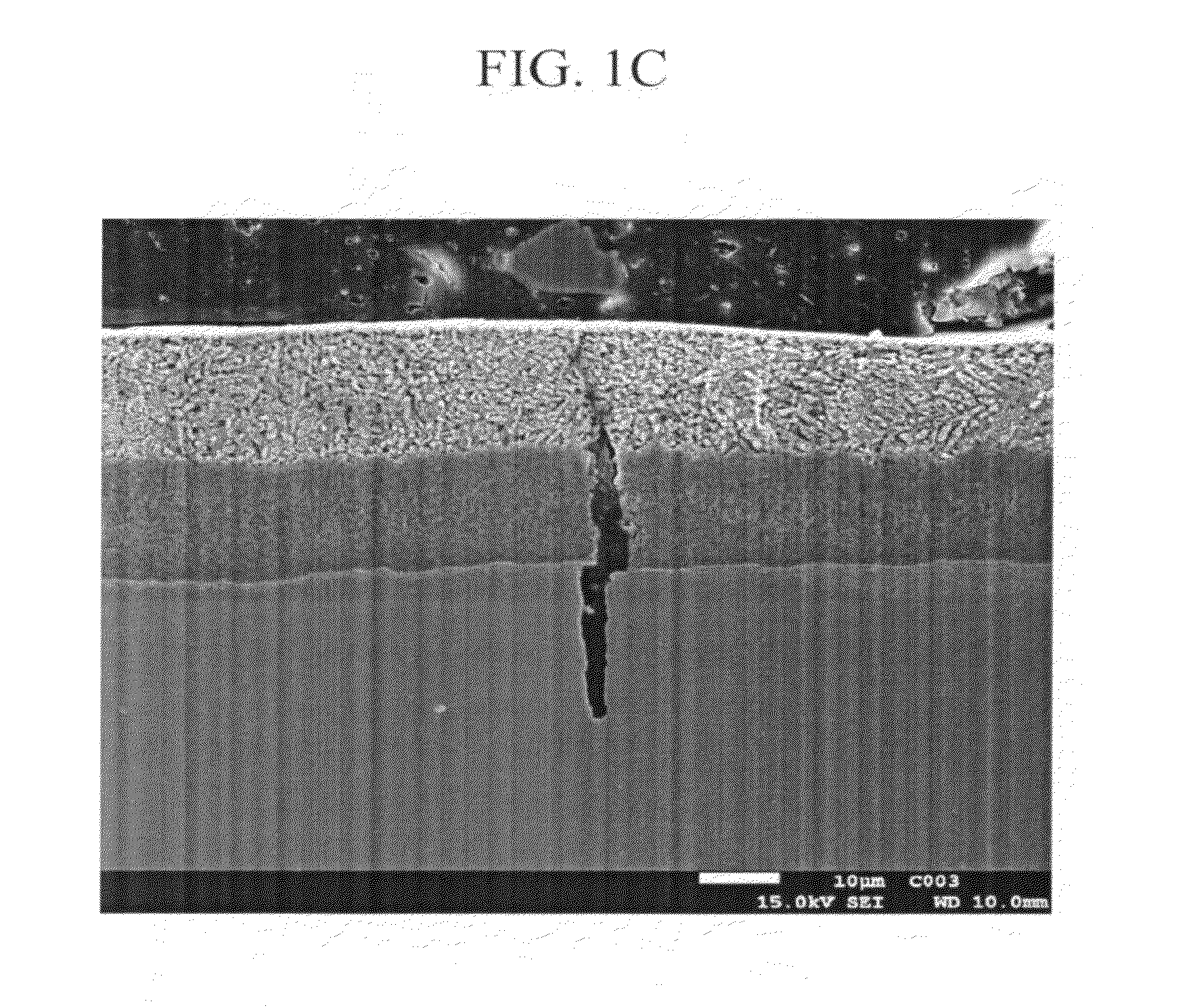High-strength zn-al coated steel wire for bridges with excellent corrosion resistance and fatigue properties and method for manufacturing the same
- Summary
- Abstract
- Description
- Claims
- Application Information
AI Technical Summary
Benefits of technology
Problems solved by technology
Method used
Image
Examples
example 1
[0127]A steel material containing 0.77% of C, 0.22% of Si, 0.78% of Mn, 0.006% of P, 0.008% of S, 0.031% of Al, and the balance consisting of Fe and unavoidable impurities was hot-rolled to obtain wire rod. The wire rod was cooled in salt bath at 525° C. just after hot-rolling as patenting. In addition, the wire rod was cold-drawn to obtain a steel wire with a wire diameter of 4.9 mm. The steel wire was degreased, pickled with acid, immersed in flux aqueous solution at 60° C. for 10 sec, dried and then coated under conditions as shown in Tables 1 to 3 below. Also, the coating thickness was controlled to be 50 μm by wiping.
[0128]In addition, a flux used for Zn—Al coating herein was aqueous solution having a total flux concentration of 15% and a pH of 1.0, and was controlled to 30% to 40% of Zn2+ ions, 8% to 12% of K+ ions, 2% to 3% of Sn2+ ions, and 45% to 50% of the total amount of Cl− and F− ions. In addition, 7% NH4Cl aqueous solution was used as a flux for galvanizing.
[0129]Also,...
example 2
[0150]The chemical components of a test material are shown in Table 4. The test material was hot-rolled and then directly cooled in salt bath just after hot-rolling to perform patenting. Also, a steel A shown in Table 4 has the same component as in Example 1. The obtained wire rod was cold-drawn to obtain a high-carbon steel wire with a wire diameter of 4.5 mm to 7.3 mm, and hot-dip Zn—Al coating was performed by a 1-bath method. For comparison, 2-bath hot-dip Zn—Al coating (galvanizing and then hot-dip Zn—Al coating) and galvanizing were performed.
[0151][Table 4]
[0152]In Table 4, the symbol “-” means that an element is not intentionally added. An underlined value means that the value is out of the range of the present invention.
[0153]The hot-dip coating was carried out by degreasing the steel wire, pickling with acid, immersing in flux aqueous solution at 60° C. for 10 sec, drying and then immersing in molten coating bath with a predetermined composition for 5 sec to 15 sec. The te...
example 3
[0168]The chemical components of a test material associated with Example 3 are shown in Table 9. The test material was hot-rolled and then directly cooled in salt bath just after hot-rolling to perform patenting. The microstructure of the obtained wire rod was observed with SEM and TEM to measure the pearlite fraction and the cementite thickness thereof. The tensile strength was measured in accordance with JIS Z 2241. The difference in the tensile strength of the wire rod was determined by conducting the tensile test by using 36 test specimens in total sampled from three rings of the coil, and by calculating the difference between the maximum and minimum in the tensile strength. Table 10 shows the patenting temperature, the pearlite fraction and the cementite thickness of the wire rod, the tensile strength, and the difference in the tensile strength. Table 10 also shows a value calculated by the equation of 0.027×C.
[0169][Table 9]
[0170]In Table 9, an underlined value means that the ...
PUM
| Property | Measurement | Unit |
|---|---|---|
| Temperature | aaaaa | aaaaa |
| Temperature | aaaaa | aaaaa |
| Temperature | aaaaa | aaaaa |
Abstract
Description
Claims
Application Information
 Login to View More
Login to View More - R&D
- Intellectual Property
- Life Sciences
- Materials
- Tech Scout
- Unparalleled Data Quality
- Higher Quality Content
- 60% Fewer Hallucinations
Browse by: Latest US Patents, China's latest patents, Technical Efficacy Thesaurus, Application Domain, Technology Topic, Popular Technical Reports.
© 2025 PatSnap. All rights reserved.Legal|Privacy policy|Modern Slavery Act Transparency Statement|Sitemap|About US| Contact US: help@patsnap.com



